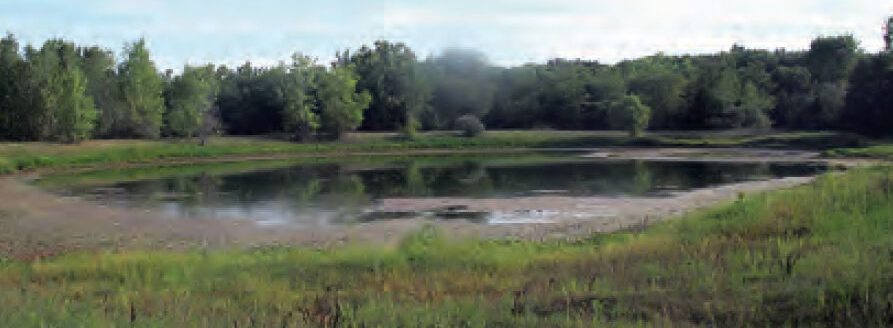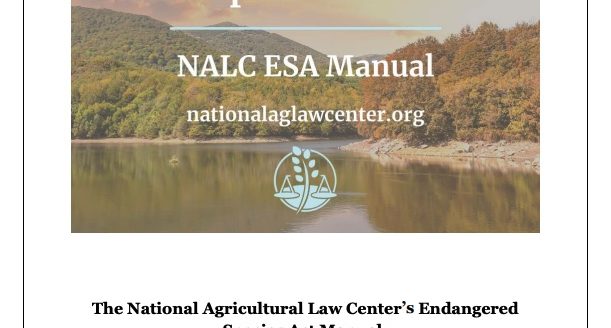The Environmental Protection Agency has released its draft insecticide strategy for public comment as it pertains to federally endangered and listed threatened species.
The draft strategy, issued July 25, identifies protections the EPA will consider when it registers a new insecticide or re-evaluates an existing one. In developing the draft strategy, the EPA identified protections to address potential impacts for more than 850 species listed by the U.S. Fish and Wildlife Service.
The draft is part of the EPA’s ongoing efforts to develop a more efficient, effective and protective multichemical, multispecies approach to meeting its obligations under the Endangered Species Act, according to a news release. The EPA focused the draft strategy on conventional insecticides used in agriculture in the lower 48 states, where approximately 34 million pounds of insecticides are applied each year. The draft identifies protections earlier in the pesticide review process, believing it creates a far more efficient approach to evaluate and protect the FWS-listed species that live near these agricultural areas.
This draft strategy also incorporates lessons learned from the EPA’s draft herbicide strategy that the agency released last year to minimize the impacts of agricultural herbicides on listed species. For example, based on feedback on the draft herbicide strategy, the EPA designed the mitigations in the draft insecticide strategy to maximize the number of options for farmers and other pesticide users.
These mitigation options also consider farmers who are already implementing measures to reduce pesticide runoff and those who are located in areas less prone to pesticide runoff, such as flat lands and regions with less rain to carry pesticides off fields. These measures also include the U.S. Department of Agriculture’s Natural Resources Conservation Service practices and state or private stewardship measures that are effective at reducing pesticide runoff.
Similar to the herbicide strategy, the draft insecticide strategy uses the most updated information and processes to determine whether an insecticide will impact a listed species and identify protections to address any impacts. To determine impacts, the draft strategy considers where a species lives, what it needs to reproduce (e.g., food or pollinators), where the pesticide will end up in the environment and what kind of impacts the pesticide might have if it reaches the species. These refinements greatly reduce the need for pesticide restrictions in situations that do not benefit species.
Concerns expressed
A coalition of farmers, retailers, cooperatives, crop consultants, researchers, manufacturers and state regulators are concerned the that the insecticide policy may not achieve results the EPA seeks. In its July 22 letter to EPA, the coalition said, “The current methods EPA uses to assess these risks are exceedingly conservative, often relying on unrefined models and very conservative assumptions in lieu of considering available relevant and reliable scientific and commercial data. As a result, these assessments can significantly overstate risks to species, concluding that pesticide users must adopt more costly, stringent restrictions that are truly necessary to protect listed species.”
Among the organizations asking for greater dialogue are the American Farm Bureau Federation, American Soybean Association, National Association of Wheat Growers, National Corn Growers Association, National Cotton Council, National Sorghum Producers, National Sunflower Association, and The Fertilizer Institute. Many state organizations and of those associations and other commodity groups also signed the letter.
Herbicide side
One entity that has been tracking the herbicide proposal, the Weed Science Society of America, continues to encourage the EPA to add drift reduction adjuvants to the agency’s approved mitigation options for Endangered Species Act compliance. The EPA is currently finalizing its herbicide strategy on how to meet ESA obligations and expects to publish it before September. However, DRAs weren’t among the mitigation options included in a draft herbicide strategy that the EPA released in April for public comment.
“Drift reduction adjuvants are among the most practical, affordable and efficient ways to reduce off-target pesticide movement and can thus greatly help to protect endangered species,” said Greg Dahl, WSSA president. “Pesticide applicators already use DRAs on more than 100 million acres annually in the United States, and their performance and environmental protection benefits have been well demonstrated, documented and realized.”
Voluntary compliance is important to obtain the best results from pesticide regulation, Dahl said.
“The addition of DRAs to spray mixtures is convenient, inexpensive and already widely used,” he said. “Many pesticide retailers, crop advisors, growers and applicators have familiarity with these products. This would provide them with a method to recognize the mitigation that they are taking to provide protection for endangered species. It could also encourage them to undertake additional mitigations that the EPA might recommend.”
To file an insecticide comment
The draft Insecticide Strategy Framework and accompanying support documents are available at https://www.regulations.gov/docket/EPA-HQ-OPP-2024-0299/document, for public comment for 60 days.
For more information visit https://www.epa.gov/endangered-species/implementing-epas-workplan-protect-endangered-and-threatened-species-pesticides.
Dave Bergmeier can be reached at 620-227-1822 or [email protected].




